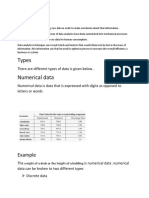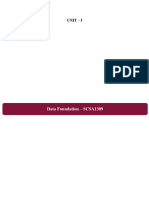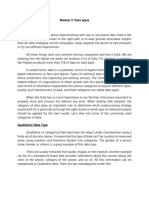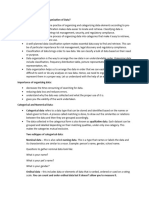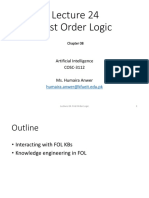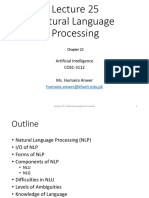0% found this document useful (0 votes)
48 views7 pagesDepartment of Computer Science: Prepared By: Ms. Zainab Imtiaz
The document discusses different types of numerical and categorical data, describing continuous data as measurable values that can be interval or ratio data, and discrete data that has a logical end, as well as categorical data that includes ordinal values with a set order, nominal values without order, and binary values with two options. Numerical data represents information as numbers, while categorical data includes non-numeric strings or dates.
Uploaded by
Khizrah RafiqueCopyright
© © All Rights Reserved
We take content rights seriously. If you suspect this is your content, claim it here.
Available Formats
Download as PDF, TXT or read online on Scribd
0% found this document useful (0 votes)
48 views7 pagesDepartment of Computer Science: Prepared By: Ms. Zainab Imtiaz
The document discusses different types of numerical and categorical data, describing continuous data as measurable values that can be interval or ratio data, and discrete data that has a logical end, as well as categorical data that includes ordinal values with a set order, nominal values without order, and binary values with two options. Numerical data represents information as numbers, while categorical data includes non-numeric strings or dates.
Uploaded by
Khizrah RafiqueCopyright
© © All Rights Reserved
We take content rights seriously. If you suspect this is your content, claim it here.
Available Formats
Download as PDF, TXT or read online on Scribd
/ 7
